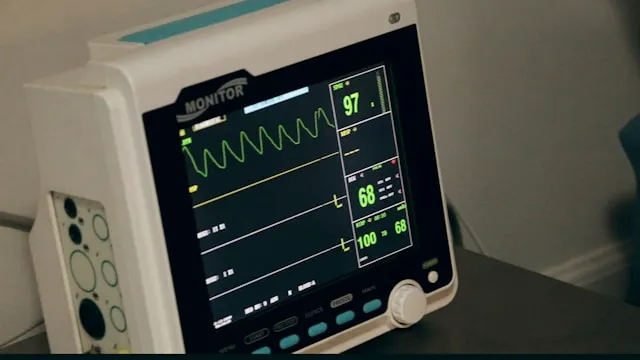Heart Bypass Surgery vs Angioplasty has always been a dilemma in the mind of patients who suffer cardiac blockages. To resolve the heart bypass surgery vs angioplasty dilemma and choose the right line of treatment, understanding the pros and cons of each are important. Most cardiologists would go the extra mile to ensure that the patient is on the same page and understands the difference appropriately. The final answer of heart bypass surgery vs angioplasty depends on the current medical situation, the number of blocked arteries, the overall health of the patient including other diseases, and of course, the patient's preference.
Before jumping into the preferences and conclusions, let us understand the disease that causes heart bypass surgery vs angioplasty dilemma as well as the pros, cons, and risks involved in both procedures.
 Heart Bypass Surgery vs Angioplasty[/caption]
The inner walls of arteries get damaged due to various factors including smoking, high cholesterol, high blood pressure, sedentary/inactive lifestyle, diabetes, or insulin resistance. Due to damaged arteries, cholesterol and other cellular waste products start building up at the site of an injured wall. This process is called atherosclerosis. This narrows down the path of blood flow and reduces or sometimes completely stops blood flow to the heart. Such a medical condition is called coronary artery disease.
As these plaques of cholesterol continue to accumulate in the arteries, patients may start experiencing signs and symptoms of the disease. In some cases, symptoms of coronary heart disease sometimes go unnoticed until the patient suffers a significant blockage or a heart attack.
Heart Bypass Surgery vs Angioplasty[/caption]
The inner walls of arteries get damaged due to various factors including smoking, high cholesterol, high blood pressure, sedentary/inactive lifestyle, diabetes, or insulin resistance. Due to damaged arteries, cholesterol and other cellular waste products start building up at the site of an injured wall. This process is called atherosclerosis. This narrows down the path of blood flow and reduces or sometimes completely stops blood flow to the heart. Such a medical condition is called coronary artery disease.
As these plaques of cholesterol continue to accumulate in the arteries, patients may start experiencing signs and symptoms of the disease. In some cases, symptoms of coronary heart disease sometimes go unnoticed until the patient suffers a significant blockage or a heart attack.
What is Coronary Artery Disease?
The smooth and flexible inside walls of coronary arteries allow proper flow of blood to the heart. Coronary artery disease is caused due to the blockage of the coronary artery and this blockage occurs when the inner wall of the artery is damaged. [caption align="aligncenter" width="351"] Heart Bypass Surgery vs Angioplasty[/caption]
The inner walls of arteries get damaged due to various factors including smoking, high cholesterol, high blood pressure, sedentary/inactive lifestyle, diabetes, or insulin resistance. Due to damaged arteries, cholesterol and other cellular waste products start building up at the site of an injured wall. This process is called atherosclerosis. This narrows down the path of blood flow and reduces or sometimes completely stops blood flow to the heart. Such a medical condition is called coronary artery disease.
As these plaques of cholesterol continue to accumulate in the arteries, patients may start experiencing signs and symptoms of the disease. In some cases, symptoms of coronary heart disease sometimes go unnoticed until the patient suffers a significant blockage or a heart attack.
Heart Bypass Surgery vs Angioplasty[/caption]
The inner walls of arteries get damaged due to various factors including smoking, high cholesterol, high blood pressure, sedentary/inactive lifestyle, diabetes, or insulin resistance. Due to damaged arteries, cholesterol and other cellular waste products start building up at the site of an injured wall. This process is called atherosclerosis. This narrows down the path of blood flow and reduces or sometimes completely stops blood flow to the heart. Such a medical condition is called coronary artery disease.
As these plaques of cholesterol continue to accumulate in the arteries, patients may start experiencing signs and symptoms of the disease. In some cases, symptoms of coronary heart disease sometimes go unnoticed until the patient suffers a significant blockage or a heart attack.
Diagnosis of Coronary Artery Disease
If coronary artery disease symptoms are persistent, you must consult an experienced cardiologist. Depending on your current condition and medical history, the cardiologist will consider management by medication or recommend one of the following diagnostic tests to plan further treatment:- Electrocardiogram: ECG is used to record electrical signals through your heart which may reveal inadequate blood flow to your heart.
- Echocardiogram: In this sound waves are used to produce images of the heart to determine the working condition of all the parts of the heart wall which contributes to the heart pumping activity.
- Cardiac catheterization: Also known as an angiogram, this test is used to determine the flow of blood through the heart. In this test, a special dye is injected into the coronary arteries through a catheter and outlines narrow spots of blockages on the X-ray images.
Coronary Artery Disease Treatment
Patients suffering from coronary artery disease (heart bypass surgery) are typically put on medications to improve lipid levels, lower blood pressure and prevent blood clots; as well as advised to modify their lifestyle to help prevent disease progression. According to cardiologists, adopting the following healthy lifestyle habits can prevent the progression of the disease and promote healthier arteries:- Eat healthy foods
- Quit smoking
- Exercise regularly
- If obese, lose weight
- Avoid stress
- Yoga and meditation
Angioplasty
More than 250,000 angioplasty procedures are performed in India every year. Angioplasty is a minimally invasive procedure for the widening of a coronary artery. This procedure does not remove plaque from the coronary arteries, rather it widens the arteries to improve the flow of blood to the heart. After angioplasty, more than 92% of patients in India have reported immediate relief from coronary artery disease symptoms. Other patients reported relief a few hours after the procedure. Angioplasty is also called Percutaneous Coronary Intervention (PCI). During angioplasty, a catheter (a long, thin tube) is inserted into the narrowed part of the artery. This catheter is joined via a wire with a deflated balloon. This balloon is inflated at the narrowed part of the artery thereby expanding the artery. In almost all cases, a scaffold-like mesh device called a stent is permanently placed in the artery during angioplasty. The stent helps the artery to stay widened for the long term and prevents it from collapsing again. Without the stent, the probability of narrowing the artery ranges anywhere between 30 to 40%. With a stent, this rate is reduced to 10 to 20%.Pros and Cons of Angioplasty
Angioplasty has several advantages over bypass surgery. In addition to being a relatively simple procedure, angioplasty has a faster recovery rate, fewer complications, and lower costs. Also, after a stay of 1 to 2 days in the hospital, the patient can resume normal activities. For uncomplicated cases, angioplasty is now becoming the first choice for most patients and cardiologists. But the convenience that comes with the angioplasty often comes with a price. It is estimated that 15 to 20% of patients who have undergone angioplasty might be at risk of narrowed arteries in a few years and eventually need bypass surgery. Also, in a case of a drug-eluting stent, the patient must take medication for a year to prevent the deadly clots to be formed around the stent.Heart Bypass Surgery
In India, as per estimates, each year more than 120,000 patients undergo heart bypass surgery to improve blood flow to the heart. Typically heart bypass surgery involves taking a section of the healthy blood vessel, from the inside of the chest wall or the lower leg, and attaching it above and below the blocked artery. This allows blood to bypass the blocked area and maintain proper flow to the heart muscle. Heart Bypass surgery is performed under general anesthesia. In-hospital time typically ranges from 4 to 7 days depending on the recovery of the patient. Heart Bypass Surgery is also called Coronary Artery Bypass Grafting (CABG).Newer Developments for Heart Bypass Surgery
The minimally invasive direct coronary artery bypass (MIDCAB) technique is newly introduced and is proven to be a less invasive version of the traditional CABG. In this new procedure, the use of a heart-lung machine and the cut through the breastbone is not required. Instead, a nick of incision between the ribs is made to operate on the blocked artery. Unlike conventional bypass surgery, the MIDCAB procedure is performed on the beating heart with the use of a stabilizing device. Despite its convenience, this technique cannot be used when there are multiple cases of blocked arteries.Pros and Cons of Heart Bypass Surgery
Even though the success rate of angioplasty is very high, not everyone with coronary heart disease can be recommended for angioplasty. Heart bypass surgery is usually chosen over angioplasty for patients with one or more of the following conditions:- Narrowing of the left main coronary artery - Left main coronary artery is the main artery supplying blood to the heart. Even a small blockage or brief period of stoppage of blood flow through this artery could be fatal or severely damage the heart.
- Narrowing of three or more arteries - For patients suffering from triple or quadruple or more vessel disease, heart bypass surgery is a better option than angioplasty.
- Diabetes - Patients who have high diabetes would be advised to undergo CABG surgery since it offers better survival outcomes.
Heart Bypass Surgery vs Angioplasty
While it may sound straightforward, the situation of heart bypass surgery vs angioplasty is quite tricky. Typically, the surgeon uses the reports of coronary angiography to examine the degree of the arteries being blocked based on the nature of the plagues and the range of blockage of the arteries. On the basis of the reports, an experienced cardiologist weighs the heart bypass surgery vs angioplasty pros and cons. The surgeon might also actively involve the patient and their caregivers to come to a common conclusion. Most of the decisions of heart bypass surgery vs angioplasty are based on:- Severity and extent of spread of coronary artery disease
- Presence of chest pain and shortness of breath
- Functioning of the heart
- Other co-existing medical conditions, such as diabetes, peripheral artery disease, or prior stroke or heart attack
- Patient & family preferences
Common Questions Regarding Heart Bypass Surgery
Coronary Artery Bypass Grafting (CABG), commonly known as Heart Bypass Surgery, is a surgical procedure carried out in cases where the artery blockage cannot be rectified by non-surgical procedures, namely coronary angioplasty. The decision to undertake this surgery is quite critical. Therefore, doctors take into consideration many factors including a few discussed below:1. Severe Blockage of Artery Passage
As a consequence of the deposits on the walls of the arteries, there is an acute shrinkage of the vital passage through which the blood is pumped into the heart. This prevents the smooth functioning of the heart which subsequently affects the blood supply throughout the whole body. It leads to severe pain in the chest as there is a decreased oxygen supply and this state is termed Angina.2. Inadequate Supply of Oxygen
Due to the fat residues accumulating in the passage of coronary arteries, there is insufficient flow of blood into the heart. The blood consists of oxygen which is extremely necessary for the entire human body and therefore its limited supply hinders the smooth functioning of the body.3. Complete Obstruction of Coronary Arteries
The situation turns grave when there is a complete blockage of the artery passage and there is a minimal flow of blood to the heart. As a result, the heart muscles began to perish which can result in myocardial infarction commonly called a heart attack.4. Heart Bypass Surgery - Failed previous Angioplasty
In some cases, after coronary angioplasty has been performed and a stent has been placed to widen the artery, there is a recurrence of contraction, and blood flow is again hampered. In such cases, performing heart bypass surgery remains the best option for the cure.5. Improper Functioning of Left Ventricle
The left ventricle is the foremost chamber responsible for the pumping of blood. The need for bypass surgery arises when this chamber is not performing its functions well.6. Common symptoms acting as warning signs of Heart Bypass Surgery
- An extreme heaviness or pain can be felt in the chest when there is a substantial blockage of the passage. This pain can be felt even while doing light physical exertion but after taking some rest this pain disappears temporarily. Other parts of the body such as the arms, jaw, throat, and the upper back area around the neck can also experience such pain or heaviness indicating warning signs.
- In certain cases, a person may only be able to sense unusual fatigue or occasional tiredness even after a minor physical activity. Such symptoms should never be taken lightly and immediate medical consultation is suggested.
For more information and free personalized guidance, talk to Credihealth Medical Experts today.

Reviewed by







